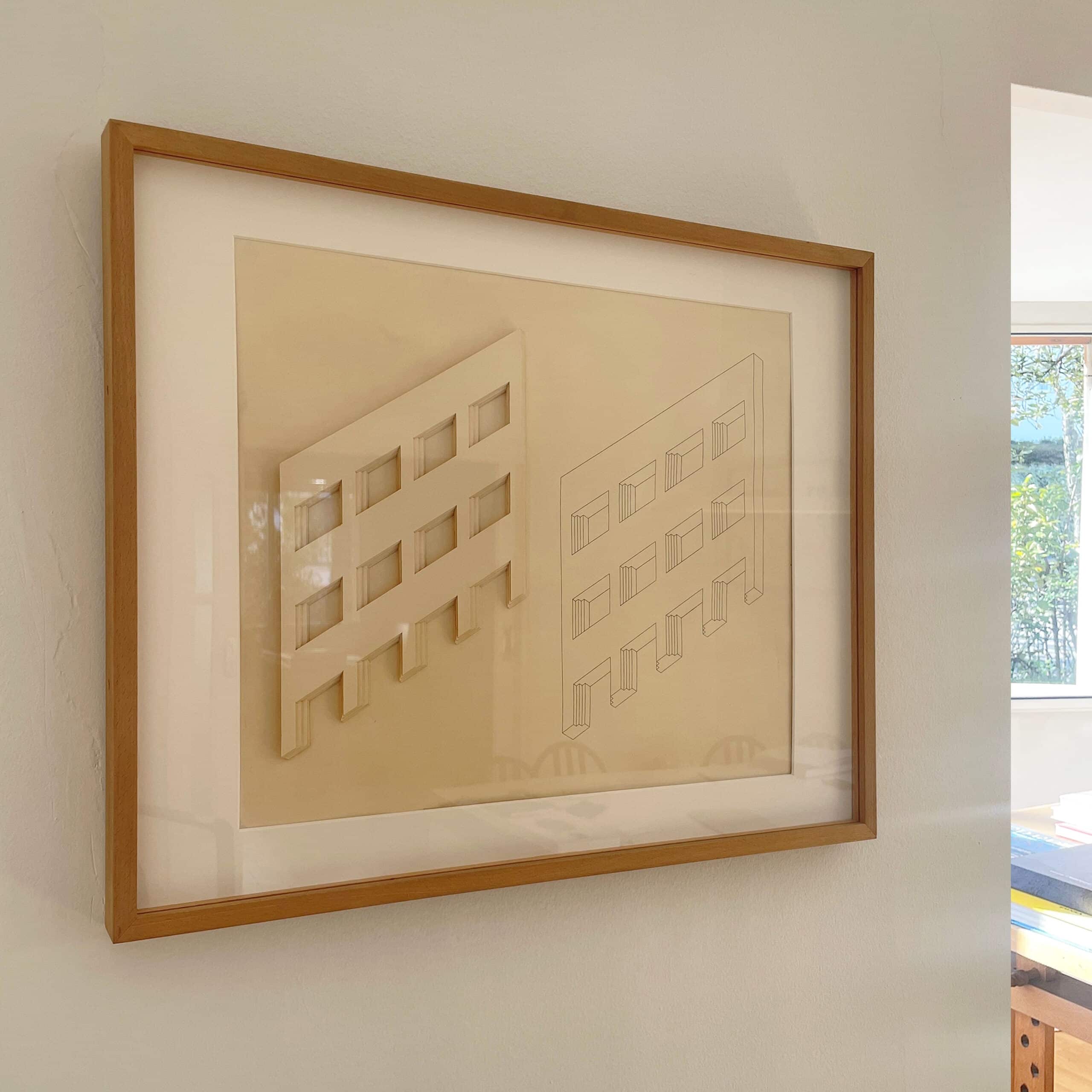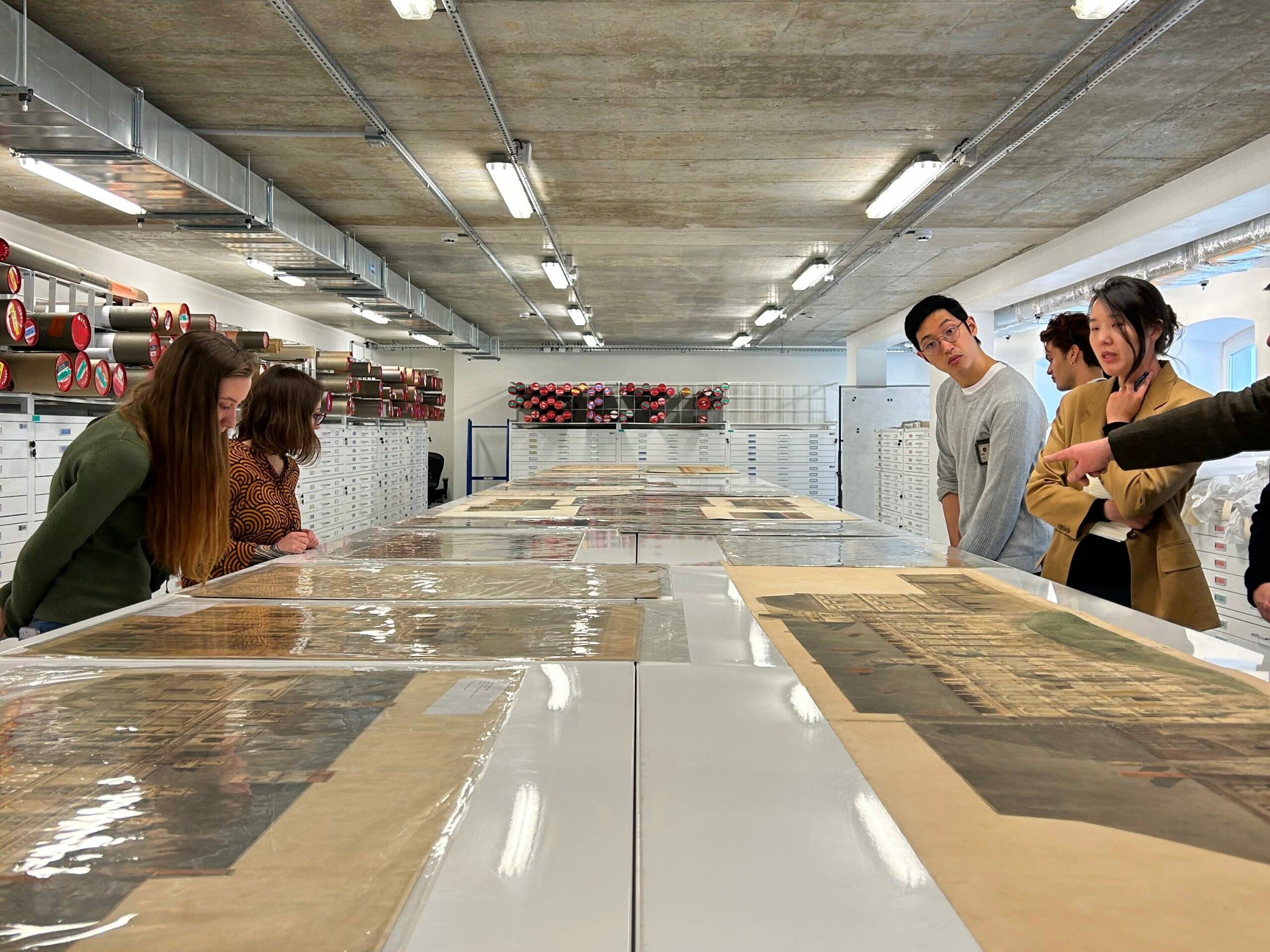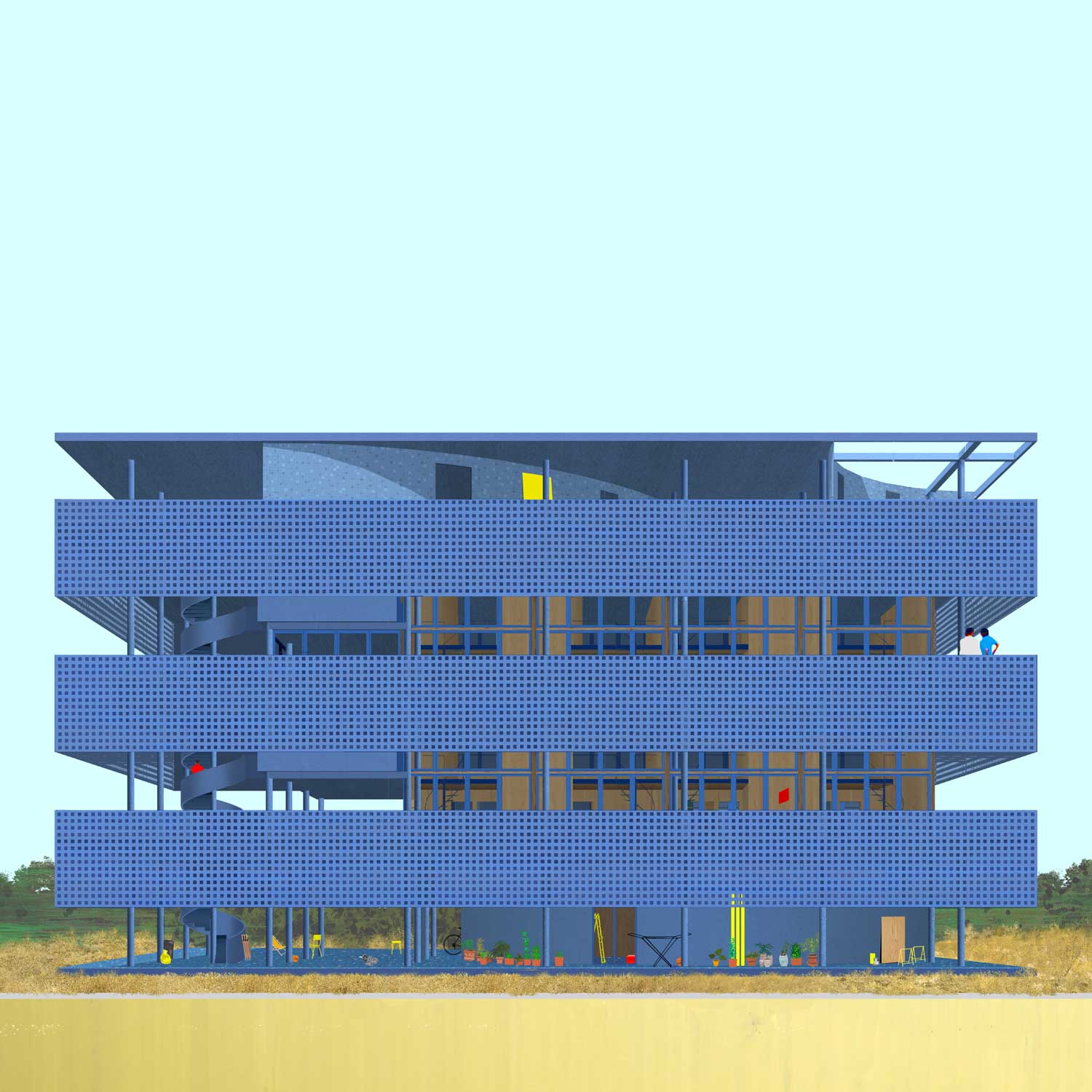Excuse My Dust, or the Air I Breathe: Notes on Architecture in the Archives
The following text is a partially revised version of that delivered and published in ‘Stoà Open Seminar. Emerging perspectives on teaching and research in architectural design’ (May 2024). It has since become the conceptual framework for a series of seminars held on the same subject at the School of Architecture of Cagliari, Italy. These reflections run in parallel with the author’s postdoctoral research conducted across South and North America, as well as his involvement in the experimental course ‘Architecture in the Archive’ taught by Professor Patricio del Real at Harvard University.
*
Architecture archives evoke a learning method that is both rooted in and peculiar to our discipline. Scrutinising original materials allows for access to the most intimate substance of architecture, accepting the obvious restrictions of the slowest act of knowledge acquisition paired with a high degree of complexity and control. While it is evident that these aspects stand in contrast to current trends driven by simplified and instant communication, the sporadic encounters consumed in the slowness and silence of the archive continue to reveal a tremendous potential—extending far beyond the confines of the archive itself. What may appear as a static and inert ‘space of memory’ instead becomes a privileged site for expanding critical discourse on architecture. It is no coincidence that, in recent years, we have witnessed the rediscovery of archiving as a cultural practice primarily focused on the re-evaluation of historical narratives. In Dust: The Archive and Cultural History, Carolyn Steedman provides a compelling entry point into this question, dispelling any romanticised view:
‘Nothing starts in the Archive, nothing, ever at all, though things certainly end up there. You find nothing in the Archive but stories caught half way through: the middle of things; discontinuities […] The Archive is made from selected and consciously chosen documentation from the past and also from the mad fragmentations that no one intended to preserve and that just ended up there. And nothing happens to this stuff, in the Archive. It is indexed, and catalogued, and some of it is not indexed and catalogued, and some of it is lost. But as stuff, it just sits there until it is read, and used, and narrativised.'[1]
However, in the wake of this renewed interest, would it not be appropriate to reconsider the pedagogical implications of this practice—still rarely explored—and its potential impact on the education of architects? This is not about reiterating the poetics of the fragment, but rather about delving deeper into the fact that the ‘archivist and the architect are inseparable’ since ‘experimental design requires an experimental relationship to the archive’.[2] To investigate the nature of this relationship, we must ask how those artefacts—both the rarest and the discarded ones—can operate as pedagogical instruments capable of stimulating the complicated process of teaching and learning architectural design. Can we reconsider architecture archives as active spaces for developing and practicing design teaching? What is the latent potential we could unleash through direct confrontation between original materials and ‘involuntary testimonies’ like unexperienced learners? And since the role of architects in this field is becoming increasingly prominent, what is the contribution of lateral observers, that is, those who approach the archive through the lens of teaching architectural design? Without the ambition to answer these questions within the limits of these few lines, and bearing in mind that the vast philosophical literature about the ‘archive’ cannot be ignored to address its deeper connotations, this text is the result of meditations, still in progress, arising from personal experiences as both teacher and researcher in the field of architectural design—also provoked by recent encounters with possible interlocutors on the subject. Thus, the significance of this lateral view may lie in revisiting the archive as a pedagogical instrument by reconsidering its material, logistical, and intellectual thresholds as sites where architectural knowledge is produced. With this in mind, the three pedagogical thresholds outlined below may serve as entry points for cultivating sharper lines of argument regarding archive trends, gestures, and concerns.
I
As a foundation of our discipline, materiality is both a problematic and profound concept. It is not limited to the physical act of construction, but also encompasses the ways design ideas materialise and are translated into form. In this sense, the archive is the place where the material dimension of buildings can be sought in synergy, not in contradiction, with what is learned by observing the ‘crude’ reality of buildings. On the occasion of a recent interview with Rafael Moneo in his Madrid office, interweaving the concept of materiality—expertly insinuated into his course briefs—and the possibilities of the archive as a pedagogical instrument in architectural design, we converged on the fact that architectural representations already contain the future reality, even if, ‘in a reduced form.’[3] Although situated at the opposite sides of the design process—origin and end, creation and construction—the archive and the built work offer the closest pedagogical experiences to one another. Both share a certain ‘solitude’, albeit for different reasons, stemming from their escape from the ‘exclusive property of the architect.’[4] Instead of being subjected to mere consequentiality or acting as mutual counterparts, the archive and the constructed building coexist as complementary sources of a learning process rooted in architecture’s material consistency.
It is worth mentioning that the conversation between us took place while leafing through the only publication on Moneo’s work that systematically collects, in chronological order, a selection of 121 archive drawings: ‘dibujos de tablero’ consisting solely of plans, sections, and axonometrics that illustrate the form of buildings. As curator Francisco González de Canales points out, these original documents cannot replace Moneo’s built work. Still, their material consistency offers perhaps the closest possible way to learn from buildings.[5] However, everything material is also physical matter, that is, precisely where the dust first settles. And inevitably, wrapped in an allure of mystery. So, over the course of that interview, my attention shifted from the superb sequence of archival drawings in the catalogue to a floating object hanging on a wall of Moneo’s office: a thick, stratified axonometric made of cardboard, whose layers meticulously slide over each other along a 45-degree axis, sharing the same neutral background as its homologous axonometric drawing rendered in sharp black ink lines. This object, which acquired a new life of its own, provided me with a telling glimpse into the well-known and frequently commented-on design of Bankinter’s façade (1972–1976), offering a crystal-clear insight into Moneo’s belief that ‘architecture needs the support of matter.’ Isn’t it, perhaps, the thickness and the material consistency of this axonometric that makes this possible? Each object produced as part of a design reflection is undoubtedly unique and irreplaceable. Yet, as Moneo points out, our interest in these objects ‘should be considered for their importance in the life of buildings.’ That said, if the archive is to serve as a site for teaching and learning about materiality in architecture, we must navigate the delicate balance between the seductive power of material objects associated with a design project—drawings, models, photographs, descriptions—and their genuine, productive input in conveying architectural knowledge. Building on this idea, the material threshold of architectural knowledge could offer a basis for deeper reflection on emerging archival trends—such as exploring the archival object as a medium in itself, paradoxically independent of its content.

II
The term logistics, in general, may refer to the spatial and organisational complex that allows archives to be fully operational. However, in its narrower sense, logistics also refers to the basic infrastructure that unleashes the archive’s performative nature, that is, essentially, the result of interdependent practices of ‘tabularknowledge’. In his latest book, Reinhold Martin elaborates on the twofold meaning of this expression to dissect the ritual of research seminars: ‘a pedagogical instrument devoted to teaching undergraduates how to read books’ which became so pervasive in the making of the modern university.[6] On the one hand, the seminar’s dialogic practice was provoked by the exposition of individual arguments that mobilised key concepts drawn from a carefully tabulated list of books, where subject matter and ‘great ideas’ were meticulously disseminated. On the other hand, the large oval table—conspicuously headless—was the primordial logistical infrastructure that allowed multiplying the speaking mouths. Thus, the pedagogical technique behind the seminar was inseparable from its logistical apparatus. A parallel can be drawn with archives, at this point, where the tabular nature of knowledge performs on two levels: the systematic tabulation of ‘great design ideas’ through complex indexing processes, and the large rectangular table—sometimes outfitted with auxiliary tools—that accommodates endless, silent circumnavigations. Thus, could the logistical apparatus of the archive—and its tabular mode of knowledge—not be a possible target for making its pedagogical potential more explicit? On the one hand, this might involve encouraging a productive shift away from rigid tabulations, where indexes and references tied to each archival object are temporarily or partially suspended, allowing for their mobilisation and the emergence of unexpected connections. On the other hand, to physically support the ‘creative dimension of research’ through ‘fortuitous juxtapositions’,[7] the traditional 1:1 relationship between the table and the prototypical archive scholar could be altered, with the former acquiring a more inclusive and dynamic character. The table serves as both the surface that allows the physical mobilisation of objects and, contextually, a proper tool for conviviality where observation, reflection and discussion take place simultaneously and collectively—as seen more and more often in the images documenting life in the archives. Expanding from here, and broadening the scale of logistics, a wider conversation opens around the migration of entire archives from their places of origin and the pressing need to imagine alternative networks and systems of connection.

III
The intellectual threshold of the archive empowers the mental space in which to experiment with design thinking. While perhaps the most elusive aspect—especially when compared to the archive’s material and logistical dimensions—it is nonetheless essential for fulfilling any pedagogical objective and amplifying the potential of the latter. In this sense, we should take into account the exceptional nature of learning architecture through archives, that is, the lack of any mediation given by architectural narratives. Indeed, archives are those places where narratives on a project can be constructed and deconstructed multiple times, and this coincides with a crucial moment in which we move from the material status of the archive to the intellectual one. ‘The final destination of the archive is always situated outside its own materiality,’ claims Achille Mbembe, because ‘its status is also an imaginary one.’ The ability to craft links in the attempt to formulate narratives is intellectual, and, ‘just like the architectural process, is the product of composition’.[8] However, this is not a matter of weaving time together into re-establishing historical order; rather, it is about assembling or dismantling imaginaries through archival objects that could be instrumental in powerfully supporting a thematic approach towards design projects—regardless of chronological reconstruction. In addition to this, the collective dimension of the archive assumes a greater significance. As previously noted, transforming observation, reflection, and discussion into a collective practice can be achieved by challenging the archive’s logistical infrastructure—specifically by destabilising the tabular structure of knowledge. Yet the intellectual threshold of the archive extends beyond this practice and involves possible confrontations with objects rooted in a relatively distant past. Those who participate in this practice, in fact, are increasingly called to action by literally producing ‘new objects’ that implement the archive itself. In doing so, they reposition themselves as co-authors of the archive’s collective dimension—bridging past and present in meaningful ways. This is easier to understand by examining some critical design investigations closely related to our discipline, where redrawing or modelling is increasingly practised, starting from the archive’s primary sources.[9]

It is not about re-establishing the power of the archive as it was when the highest ambition of the classical architect was to obey the law of emulation. On the contrary, these newly produced objects become vehicles for new information, clues, and details. In this way, intellectual manipulations are deliberately operated into the archive by adding some pieces that did not exist until then. Through them, the sacredness of the archive is disrupted as they become objects of study that ultimately implement collections.[10] As a result, the archive’s authority as an ‘instituting imagery’ is openly questioned leading towards a radical conception of co-ownership of the archive’s imaginary. Building on this, could the pedagogical implications of architectural practice be the most effective in provoking the deinstitutionalisation of the archive, subverting its presumed static and inert nature?
If this is the case, while the archive keeps perpetuating its allure protecting the granular histories of both celebrated and forgotten projects, built or imagined, we should resist the seduction of the dust we contemplate there, and instead focus on the air we breathe within its walls. Stay focused, as John Hejduk suggested, on that moment when air is perceived as the silent conduit of sensations and thoughts—those intangible forces that have always nourished architectural knowledge. It is in this shared experience between past and present that the true vitality of the archive resides:
‘I will tell you why I like the air I breathe, of course it keeps me alive, but there is a more important reason. It is because when I breathe the air in I breathe in all the sounds from all the voices since the beginning of time. All the voices that have placed thoughts into the air, that is, thoughts escaping from the soul through the voice into the air which I breathe in. Sounds that I cannot hear—silent sounds filling the air that generations have spoken into. Consequently filling me with words that are an invisible text. An invisible sound text which mingles with my thoughts that are invisible. In essence an internal communion takes place giving the sense of the sublimity of silent transferences.'[11]
Notes
- Carolyn Steedman, Dust: The Archive and Cultural History (Manchester: Manchester University Press, 2001), 45, 68.
- Mark Wigley, ‘Unleashing the Archive’, in Future Anterior: Journal of Historic Preservation, History, Theory, and Criticism, Vol. 2, no. 2 (2005), 10–15.
- From Rafael Moneo in conversation with the author (Madrid, December 15, 2023).
- This concept was expressed on the occasion of Moneo’s Kenzo Tange Lecture ‘The Solitude of Buildings’, Harvard University Graduate School of Design (March 9, 1985), then published in 1986.
- Rafael Moneo, Una reflexión teórica desde la profesión: Materiales de archivo (1961-2013), Fundación Barrié de la Maza, 2013. This catalogue ran in parallel with an exhibition that brought together a selection of 19 models and 152 photographs besides drawings, focused on 52 emblematic projects by the Spanish architect.
- Reinhold Martin, Knowledge Worlds: Media, Materiality, and the Making of the Modern University, (New York: Columbia University Press), 2021, 181.
- ‘In some archives, access to any document, if granted at all, is limited, bound by strict conditions, and closely observed; in others, and I’m glad to count the gta Archive among them, a culture of trust allows low-threshold, direct access to materials of great value, allowing their fortuitous juxtaposition’. See Irina Davidovici, ‘Archive’, in Stoà no. 8 (2023), 147.
- Achille Mbembe, ‘The power of the archive and its limits’, in Refiguring the Archive edited by C. Hamilton et al. (Dordrecht: Kluwer Academic Publishers, 2002), 19–26.
- As a non-exhaustive example, see the ‘Contemporary Perspectives’ chapter included in the recently printed book edited by Roberto Gargiani, Simple Architecture. The Villa Baizeau in Carthage by Le Corbusier and Jeanneret (Brussels: Accattone, 2024).
- The first initiative at the CCA related to the archive of Argentine modernist Amancio Williams invited relatives, friends, and colleagues to write personal letters to him as if he were leaving for Canada.
- John Hejduk, ‘A Poem’, in ANY: Architecture New York, no. 0 (May/June 1993), 23.
Marco Moro (1987) is an architect and Assistant Professor of Architectural and Urban Design at the School of Architecture, University of Cagliari (Italy). His research investigates campus design and university architecture as a paradigm of transnational exchange in the postwar era. In 2022 he was appointed Postdoctoral Visiting Fellow at Harvard University, where he developed his research project based on the study of forgotten projects and archival materials that migrated from South to North America.

– Stan Allen